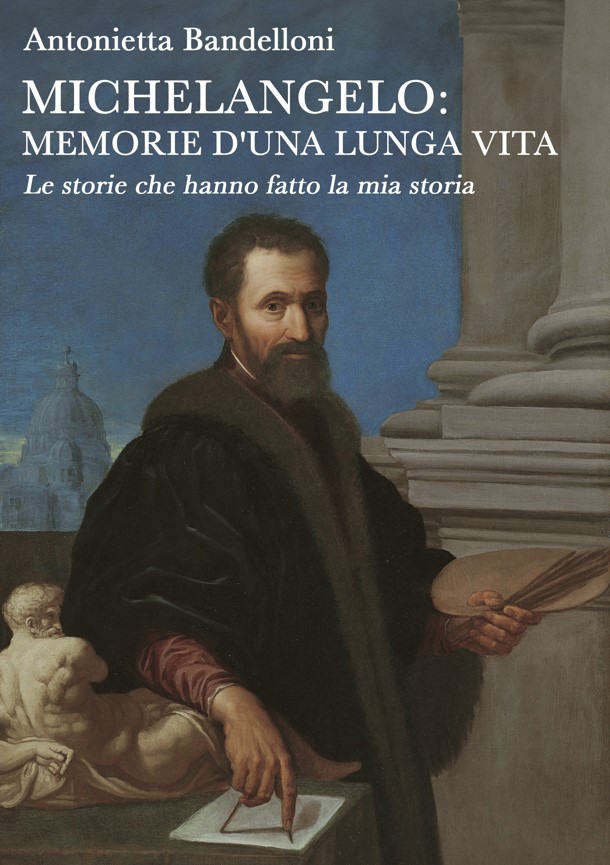La notte dei ponti
Sembrò che la terra fosse scossa da un lungo terremoto quella notte fra il 3 e il 4 agosto del 1944 a Firenze. Uno dopo l’altro i ponti di Firenze vennero distrutti ad eccezion fatta di Ponte Vecchio: la Notte dei Ponti divise la città in due.
Così annotò l’avvocato Gaetano Casoni nel suo diario mentre udiva i boati delle mine posizionate alla base dei piloni: “Da poco era cominciato ad imbrunire lievemente perché siamo nel plenilunio, quando cinque minuti avanti le ventidue è parso che un terremoto scuotesse la terra, abbiamo udito un boato prima sordo e poi fragoroso […] Ci siamo guardati in faccia: evidentemente i tedeschi cominciano la loro opera di infame distruzione”.
Le forze tedesche, nel tentativo di rallentare l’avanzata anglo-americana, non esitarono a minare tutti i ponti sull’Arno di Firenze, compresi Ponte Vecchio e Ponte Santa Trinita.
Ponte Santa Trinita, progettato dall’Ammannati, era considerato un capolavoro assoluto con le sue arcate, finanche più bello di Ponte Vecchio.

Il 29 luglio del 1944, sui muri della città venne affissa l’ordinanza di far sgombrare i Lungarni.
Fu chiaro che da lì a poco i ponti sarebbero stati fatti saltare uno dopo l’altro. Migliaia di persone dovettero lasciare in fretta e furia la propria casa già sapendo che non avrebbero più avuto modo di tornarci. In molti trovarono rifugio a Palazzo Pitti, presso il carcere delle Murate, caserme e chiese ma anche nelle case di parenti e amici che abitavano in altre zone della città o nei dintorni.
Il mattino del 3 agosto il comando tedesco ordinò ai fiorentini di non uscire di casa. La situazione non era delle più lusinghiere e fu chiaro a tutti che qualcosa di disastroso stava per accadere da un momento all’altro.

Durante la notte furono fatte esplodere le cariche e i ponti crollarono uno dopo l’altro. Le esplosioni che si susseguirono ridussero in macerie Ponte alle Grazie e Ponte alla Vittoria .
Ponte Santa Trinita, tanto era ben strutturato, che parve opporre resistenza a quelle esplosioni ma dopo la terza carica crollò anche lui in Arno.
Ponte Vecchio fu l’unico risparmiato: tanto era amato dal Furer che decisero di lasciarlo al suo posto. Questa è una delle versioni che si racconta ma potrebbe essercene un’altra forse ancor più calzante. Ponte Vecchio come tutti gli altri ponti era già stato minato e gli ordigni erano pronti a farlo saltare in aria. Sembra che due lavoratori delle botteghe orafe di Ponte Vecchio, prima di lasciare la zona, notarono il punto di allaccio delle carice di dinamite e li staccarono senza farsi vedere. Così al momento dell’esplosione le cariche non furono detonate. In merito a questa vicenda sono stati ritrovati degli interessanti documenti, resi pubblici nel libro “Di pietra e d’oro. Il Ponte Vecchio di Firenze, sette secoli di storia e di arte“ a cura di Cristina Acidini, Antonio Natali, Lucia Barocchi, Elisabetta Nardinocchi e Marco Ferri.
Però la scelta di lasciarlo lì dove stava non fu priva di conseguenze: i quartieri che si trovavano sulle due sponde vennero rasi al suolo. Borgo San Jacopo e Por Santa Maria con Via Bardi e via Guicciardini non esistevano più se non sotto forma di cumuli di macerie. Pure la casa di Machiavelli oramai era solo un ricordo nella mente di chi aveva avuto la sorte di vederla prima della Notte dei Ponti.

Le esplosioni furono violentissime tanto da far arrivare pezzi di Ponte Santa Trinita fino in via Cerretani. Al mattino Firenze si svegliò con uno scenario mai visto prima: dilaniata e divisa a metà, con i Lungarni devastati e macerie ovunque.

Provate a immaginare solo per un attimo come doveva essere Firenze in quel momento… una delle città più belle del mondo colpita al cuore. Ricordare non è mai vano. Nella speranza che notti come quelle non si ripetano più, il vostro Michelangelo Buonarroti per il momento vi saluta.
The Night of the Bridges
It seemed that the earth was shaken by a long earthquake that night between 3 and 4 August 1944 in Florence. One after another the bridges of Florence were destroyed, except Ponte Vecchio: the Night of the Bridges divided the city into two parts.
The lawyer Gaetano Casoni noted in his diary as he heard the explosions of mines placed at the base of the pylons: “It had recently begun to darken slightly because we are in the full moon, when five minutes before ten o’clock at night it seemed that an earthquake shook the earth , we heard a roar first dull and then thunderous […] We looked at each other: evidently the Germans begin their work of infamous destruction “.
German forces, in an attempt to slow down the Anglo-American advance, did not hesitate to undermine all the bridges over the Arno in Florence, including Ponte Vecchio and Ponte Santa Trinita. Ponte Santa Trinita, designed by Ammannati, was considered an absolute masterpiece with its arches, even more beautiful than Ponte Vecchio.
On 29 July 1944, the ordinance was issued on the walls of the city to have the Lungarni cleared. It was clear that soon the bridges would be blown up one after the other. Thousands of people had to leave their homes in a hurry, knowing that they would never be able to return. Many found refuge at Palazzo Pitti, at the Murate prison, barracks and churches but also in the homes of relatives and friends who lived in other areas of the city or in the surrounding area.
On the morning of August 3, the German command ordered the Florentines not to leave the house. The situation was not the most flattering and it was clear to everyone that something disastrous was about to happen at any moment.
During the night the charges were detonated and the bridges collapsed one after another. Ponte Santa Trinita, it was so well structured, that it seemed to resist those explosions but after the third charge he too collapsed in the Arno.

Ponte Vecchio was the only one spared: he was so loved by the Furer that they decided to leave him in his place.
This is one of the versions that is told but there could be another perhaps even more fitting. Ponte Vecchio like all other bridges had already been mined and the bombs were ready to blow it up. It seems that two workers of the goldsmith shops of Ponte Vecchio, before leaving the area, noticed the connection point of the dynamite sedge and detached them without being seen. Thus at the moment of the explosion the charges were not detonated. Interesting documents have been found on this story, made public in the book “Of stone and gold. The Ponte Vecchio in Florence, seven centuries of history and art” by Cristina Acidini, Antonio Natali, Lucia Barocchi, Elisabetta Nardinocchi and Marco Ferri.
However, the choice to leave it where it was was not without consequences: the neighborhoods on the two sides were razed to the ground. Borgo San Jacopo and Por Santa Maria with Via Bardi and Via Guicciardini no longer existed except in the form of heaps of rubble. Even the house of Machiavelli was now only a memory in the minds of those who had had the fate of seeing it before the Night of the Bridges.
The explosions were very violent enough to bring pieces of Ponte Santa Trinita to Via Cerretani. In the morning Florence woke up with a scenario never seen before: torn and divided in half, with the devastated Lungarni and rubble everywhere.
Just imagine for a moment what Florence must have been like at that moment … one of the most beautiful cities in the world hit by the heart. Remembering is never in vain. In the hope that nights like these will never happen again, your Michelangelo Buonarroti greets you for the moment.

Sostienici – Support Us
Se questo blog ti piace e ti appassiona, puoi aiutarci a farlo crescere sempre più sostenendoci in modo concreto condividendo i post, seguendo le pagine social e con un contributo che ci aiuta ad andare avanti con il nostro lavoro di divulgazione. . ENGLISH: If you like and are passionate about this blog, you can help us make it grow more and more by supporting us in a concrete way by sharing posts, following social pages and with a contribution that helps us to move forward with our dissemination work.
5,00 €
-

Il Giudizio Universale a olio su tela: analisi critica e dubbi sull’attribuzione a me
-

Il Cristo di Dalì a Roma: Giubileo all’insegna dell’arte
-

‘Michelangelo Buonarroti è tornato’: festeggio con voi i miei primi 10 anni d’arte, narrazioni, incontri e cambiamenti
-

Notte dei Musei: Visite Gratuite e a un euro










Sì, le guerre sono sempre distruttive…anche la Germania, alla fine, ha avuto intere città, come Francoforte, rase al suolo. In alcune città tedesche, nel dopo guerra, molti edifici storici sono stati ricostruiti esattamente com’erano prima. Peccato non sia stato fatto anche in Italia.
"Mi piace""Mi piace"